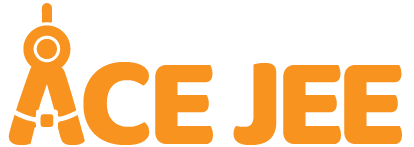For students in class 11 and class 12, it will be helpful for you to understand the chapter wise weightage, so that you give due attention and time to the important chapters. And as we go through the JEE Main physics chapter wise weightage, you will notice that class 11th and 12th carry almost an equal weightage. So class 11th students should focus on developing a good understanding of the concepts from the beginning and remember that practicing questions is key. As for class 12th students, maintain your focus till the last chapter, as modern physics, semiconductors, and communications carry 20% weightage (3 to 5 questions) in JEE Main physics.
But before we examine the chapter wise weightage for physics, note that this data is based on previous years papers and the pattern seems to be fairly steady over the years but you should assume that this may be different in your paper. So give fair attention to all the chapters. Now let’s have a quick review of the recent changes in JEE Main exam pattern, which will help us understand the chapter wise weightage better.
In Dec 2020, NTA announced that going forward JEE Main exam will be conducted four times. In 2021, JEE Main was scheduled in four consecutive months of Feb, March, April, and May. And while Feb and March exams were held as planned, April and May’s exams have been postponed due to the COVID crisis.
Another change noticed in JEE Main 2021 was that in every subject (Physics, Chemistry and Maths) there are now 30 questions (20 MCQs and 10 integer type questions) out of which you will need to attempt 25 (All MCQs and 5 out of 10 integer type questions). This is slightly different from previous year where you only had 25 questions. This change seems to be have been introduced to provide slight relief to students who have been disadvantaged due to the ongoing pandemic. Whether this pattern stays in coming years or not, we will have to wait and see.
Now let’s take a look at the chapter wise weightage in JEE Main physics paper. Note that the data presented below is based on JEE Main (B. Tech) physics papers in 2021 (Feb and March), 2020, and 2019.
JEE Main Physics Chapter Wise Weightage

Class 11 and class 12 carry an almost an equal weightage though class 12th weightage is slightly higher. In class 11th Heat and Thermodynamics is definitely a key topic and most students are fairly comfortable with this topic. Next two topics that carry relatively higher weightage from class 11th are rotation and center of mass. Most students find rotation difficult as rotational motion is not very intuitive for us. But for JEE Mains, even if you are not very comfortable with rolling motion, you can do well as mostly questions are asked on moment of inertia and rotational kinematics. So don’t lose hope. For JEE Advanced, we recommend that you approach it from ‘Question Types’ and you will find it far easier to master this chapter.
In class 12, modern physics and semiconductors, optics and electrostatics (all of which are relatively bigger chapters) carry higher weightage. Though students find modern physics to be the most scoring among class 12 chapters. So, make sure that you give it enough time and attention. Do explore 44 different types of questions that are asked on modern physics in JEE Main and JEE Advanced and you might find it far easier to champion this topic
JEE Main 2021 vs Previous Years (Physics)

So, has the weightage of questions from different chapters in physics changed noticeably in 2021? Not much. Though the percentage of questions asked from class 11 was slightly higher in 2021 Feb and March papers (49.6% compared to about 48% on an average in 2020 and 2019 papers).
Among different chapters, there have been slightly more questions from modern physics (and semiconductor, communication), simple harmonic motion, and Force & Motion in JEE Main 2021 Feb and March exam papers. On the other hand, magnetics and current and electricity saw fewer questions. You can see more details under the Question Type section
JEE Main 2021 Physics Syllabus
Click here to download the PDF from NTA website
| Unit / Chapter | JEE Main Physics Syllabus Topics | Number of questions | Useful Resources |
|---|---|---|---|
| PHYSICS AND MEASUREMENT | Physics, technology and society, S I Units, fundamental and derived units, least count, accuracy and precision of measuring instruments, Errors in measurement, Dimensions of Physics quantities, dimensional analysis and its applications. | 0 - 1 Q's | Sign Up for Free! |
| KINEMATICS | The frame of reference, motion in a straight line, Position- time graph, speed and velocity; Uniform and non uniform motion, average speed and instantaneous velocity, uniformly accelerated motion, velocity-time, position-time graph, relations for uniformly accelerated motion, Scalars and Vectors, Vector. Addition and subtraction, zero vector, scalar and vector products, Unit Vector, Resolution of a Vector. Relative Velocity, Motion in a plane, Projectile Motion, Uniform Circular Motion. | 1 - 2 Q's | Theory & Examples Important Questions JEE Main PYQ's DPP |
| LAWS OF MOTION | Force and inertia, Newton’s First law of motion; Momentum, Newton’s Second Law of motion, Impulses; Newton’s Third Law of motion. Law of conservation of linear momentum and its applications. Equilibrium of concurrent forces. Static and Kinetic friction, laws of friction, rolling friction. Dynamics of uniform circular motion: centripetal force and its applications. | 0 - 1 Q's | Sign Up for Free! |
| WORK, ENERGY AND POWER | Work done by a content force and a variable force; kinetic and potential energies, work-energy theorem, power. The potential energy of spring conservation of mechanical energy, conservative and neoconservative forces; Elastic and inelastic collisions in one and two dimensions. | 0 - 1 Q's | Sign Up for Free! |
| CENTER OF MASS | Centre of the mass of a two-particle system, Centre of the mass of a rigid body; Basic concepts of rotational motion; a moment of a force; torque, angular momentum, conservation of angular momentum and its applications | 1 - 2 Q's | Sign Up for Free! |
| ROTATIONAL MOTION | the moment of inertia, the radius of gyration. Values of moments of inertia for simple geometrical objects, parallel and perpendicular axes theorems and their applications. Rigid body rotation equations of rotational motion. | 1 - 2 Q's | Sign Up for Free! |
| GRAVITATION | The universal law of gravitation. Acceleration due to gravity and its variation with altitude and depth. Kepler’s law of planetary motion. Gravitational potential energy; gravitational potential. Escape velocity, Orbital velocity of a satellite. Geo stationary satellites. | 1 - 2 Q's | Sign Up for Free! |
| PROPERTIES OF SOLIDS AND LIQUIDS | Elastic behavior, Stress-strain relationship, Hooke's Law. Young's modulus, bulk modulus, modulus of rigidity. Pressure due to a fluid column; Pascal's law and its applications. Viscosity. Stokes' law. terminal velocity, streamline and turbulent flow. Reynolds number. Bernoulli's principle and its applications. Surface energy and surface tension, angle of contact, application of surface tension - drops, bubbles and capillary rise. | 1 - 2 Q's | Sign Up for Free! |
| OSCILLATIONS (SIMPLE HARMONIC MOTION) | Periodic motion - period, frequency, displacement as a function of time. Periodic functions. Simple harmonic motion (S.H.M.) and its equation; phase: oscillations of a spring -restoring force and force constant: energy in S.H.M. - Kinetic and potential energies; Simple pendulum - derivation of expression for its time period: Free, forced and damped oscillations, resonance. | 0 - 1 Q's | Sign Up for Free! |
| WAVES | Wave motion. Longitudinal and transverse waves, speed of a wave. Displacement relation for a progressive wave. Principle of superposition of waves, a reflection of waves. Standing waves in strings and organ pipes, fundamental mode and harmonics. Beats. Doppler Effect in sound | 0 - 1 Q's | Sign Up for Free! |
| HEAT THERMODYNAMICS KINETIC THEORY OF GASES | Heat, temperature, thermal expansion; specific heat capacity, calorimetry; change of state, latent heat. Heat transfer-conduction, convection and radiation. Newton's law of cooling. Thermal equilibrium, zeroth law of thermodynamics, the concept of temperature. Heat, work and internal energy. The first law of thermodynamics. The second law of thermodynamics: reversible and irreversible processes. Carnot engine and its efficiency. Equation of state of a perfect gas, work done on compressing a gas, Kinetic theory of gases - assumptions, the concept of pressure. Kinetic energy and temperature: RMS speed of gas molecules: Degrees of freedom. Law of equipartition of energy, applications to specific heat capacities of gases; Mean free path. Avogadro's number. | 2 - 3 Q's | Sign Up for Free! |
| ELECTROSTATICS | Electric charges: Conservation of charge. Coulomb's law-forces between two point charges, forces between multiple charges: superposition principle and continuous charge distribution. Electric field: Electric field due to a point charge, Electric field lines. Electric dipole, Electric field due to a dipole. Torque on a dipole in a uniform electric field. Electric flux. Gauss's law and its applications to find field due to infinitely long uniformly charged straight wire, uniformly charged infinite plane sheet and uniformly charged thin spherical shell. Electric potential and its calculation for a point charge, electric dipole and system of charges; Equipotential surfaces, Electrical potential energy of a system of two point charges in an electrostatic field. Conductors and insulators. Dielectrics and electric polarization, capacitor, the combination of capacitors in series and parallel, capacitance of a parallel plate capacitor with and without dielectric medium between the plates. Energy stored in a capacitor. | 2 - 3 Q's | Sign Up for Free! |
| CURRENT ELECTRICITY | Electric current. Drift velocity. Ohm's law. Electrical resistance. Resistances of different materials. V-l characteristics of Ohmic and non-ohmic conductors. Electrical energy and power. Electrical resistivity. Colour code for resistors; Series and parallel combinations of resistors; Temperature dependence of resistance. Electric Cell and its Internal resistance, potential difference and emf of a cell, a combination of cells in series and parallel. Kirchhoff’s laws and their applications. Wheatstone bridge. Metre Bridge. Potentiometer - principle and its applications. | 1 - 2 Q's | Sign Up for Free! |
| MAGNETIC EFFECTS OF CURRENT AND MAGNETISM | Biot - Savart law and its application to current carrying circular loop. Ampere's law and its applications to infinitely long current carrying straight wire and solenoid. Force on a moving charge in uniform magnetic and electric fields. Cyclotron. Force on a current-carrying conductor in a uniform magnetic field. The force between two parallel current carrying conductor definition of ampere. Torque experienced by a current loop in a uniform magnetic field: Moving coil galvanometer, its current sensitivity and conversion to ammeter and voltmeter. Current loop as a magnetic dipole and its magnetic dipole moment. Bar magnet as an equivalent solenoid, magnetic field lines; Earth's magnetic field and magnetic elements. Para-, dia- and ferromagnetic substances. Magnetic susceptibility and permeability. Hysteresis. Electromagnets and permanent magnets. | 1 - 2 Q's | Sign Up for Free! |
| ELECTROMAGNETIC INDUCTION AND ALTERNATING CURRENTS | Electromagnetic induction: Faraday's law. Induced emf and current: Lenz’s Law, Eddy currents. Self and mutual inductance. Alternating currents, peak and RMS value of alternating current/ voltage: reactance and impedance: LCR series circuit, resonance: Quality factor, power in AC circuits, wattless current. AC generator and transformer. | 1 - 2 Q's | Sign Up for Free! |
| EM WAVES OPTICS | Electromagnetic waves and their characteristics, Transverse nature of electromagnetic waves, Electromagnetic spectrum (radio waves, microwaves, infrared, visible, ultraviolet. X-rays. Gamma rays), Applications of e.m. waves. Reflection and refraction of light at plane and spherical surfaces, mirror formula. Total internal reflection and its applications. Deviation and Dispersion of light by a; prism; Lens Formula. Magnification. Power of a Lens. Combination of thin lenses in contact. Microscope and Astronomical Telescope (reflecting and refracting ) and their magnifying powers. Wave optics: wavefront and Huygens' principle. Laws of reflection and refraction using Huygens principle. Interference, Young's double-slit experiment and expression for fringe width, coherent sources and sustained interference of light. Diffraction due to a single slit, width of central maximum. Resolving power of microscopes and astronomical telescopes. Polarization, plane-polarized light: Brewster's law, uses of plane-polarized light and Polaroid. | 2 - 3 Q's | Sign Up for Free! |
| DUAL NATURE OF MATTER AND RADIATION ATOMS AND NUCLEI ELECTRONIC DEVICES COMMUNICATION SYSTEMS | Dual nature of radiation. Photoelectric effect. Hertz and Lenard's observations; Einstein's photoelectric equation: particle nature of light. Matter waves-wave nature of particle, de Broglie relation. Davisson- Germer experiment. Alpha-particle scattering experiment; Rutherford's model of atom; Bohr model, energy levels, hydrogen spectrum. Composition and size of nucleus, atomic masses, isotopes, isobars: isotones. Radioactivity- alpha. beta and gamma particles/rays and their properties; radioactive decay law. Mass-energy relation, mass defect; binding energy per nucleon and its variation with mass number, nuclear fission and fusion. Semiconductors; semiconductor diode: 1- V characteristics in forward and reverse bias; diode as a rectifier; I-V characteristics of LED. the photodiode, solar cell and Zener diode; Zener diode as a voltage regulator. Junction transistor, transistor action, characteristics of a transistor: transistor as an amplifier (common emitter configuration) and oscillator. Logic gates (OR. AND. NOT. NAND and NOR). Transistor as a switch. Propagation of electromagnetic waves in the atmosphere; Sky and space wave propagation. Need for modulation. Amplitude and Frequency Modulation, Bandwidth of signals. the bandwidth of Transmission medium, Basic Elements of a Communication System (Block Diagram only). | 3 - 4 Q's | Sign Up for Free! |
Recommended list of books for JEE Main and JEE Advanced
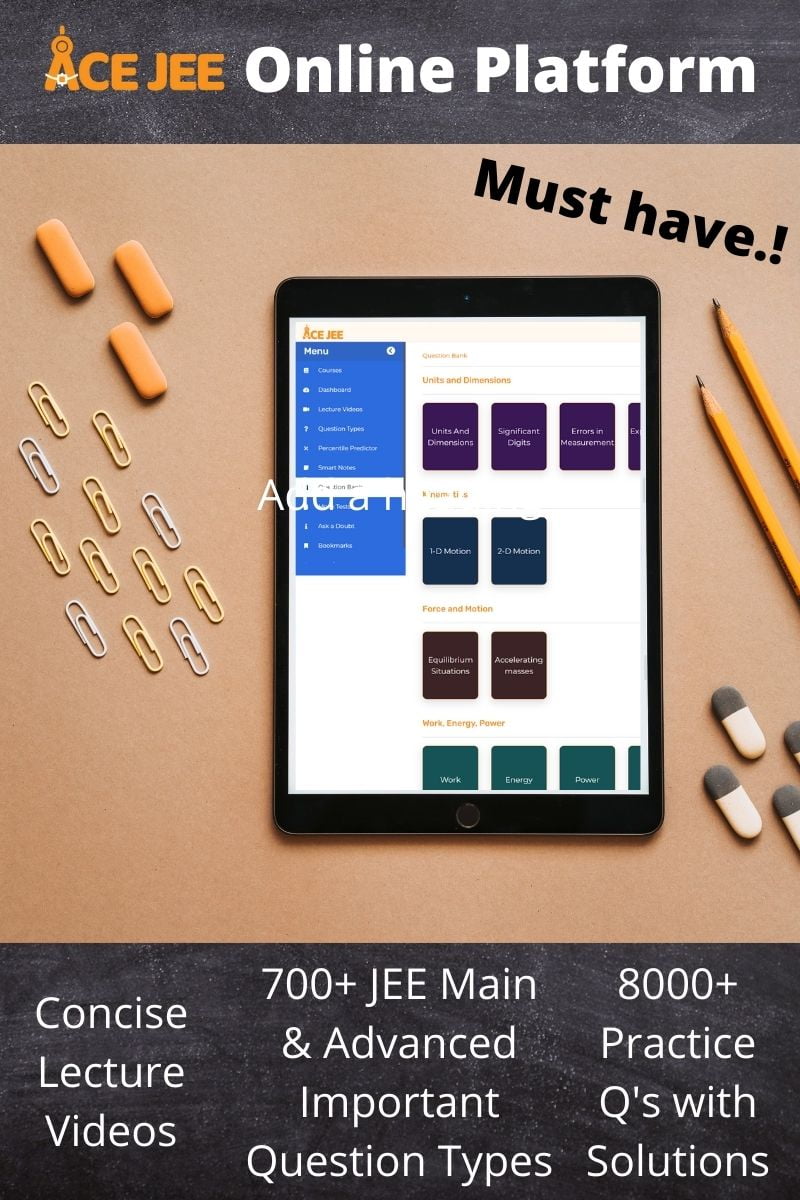
Online Platform by AceJEE - An initiative by IITians
Practice smart and build your concepts through 700+ question types (Unique and powerful feature). Get all the previous year's questions (JEE Main, JEE Advanced, and NTA). Comprehensive lecture videos to help you get an in-depth understanding of the concepts
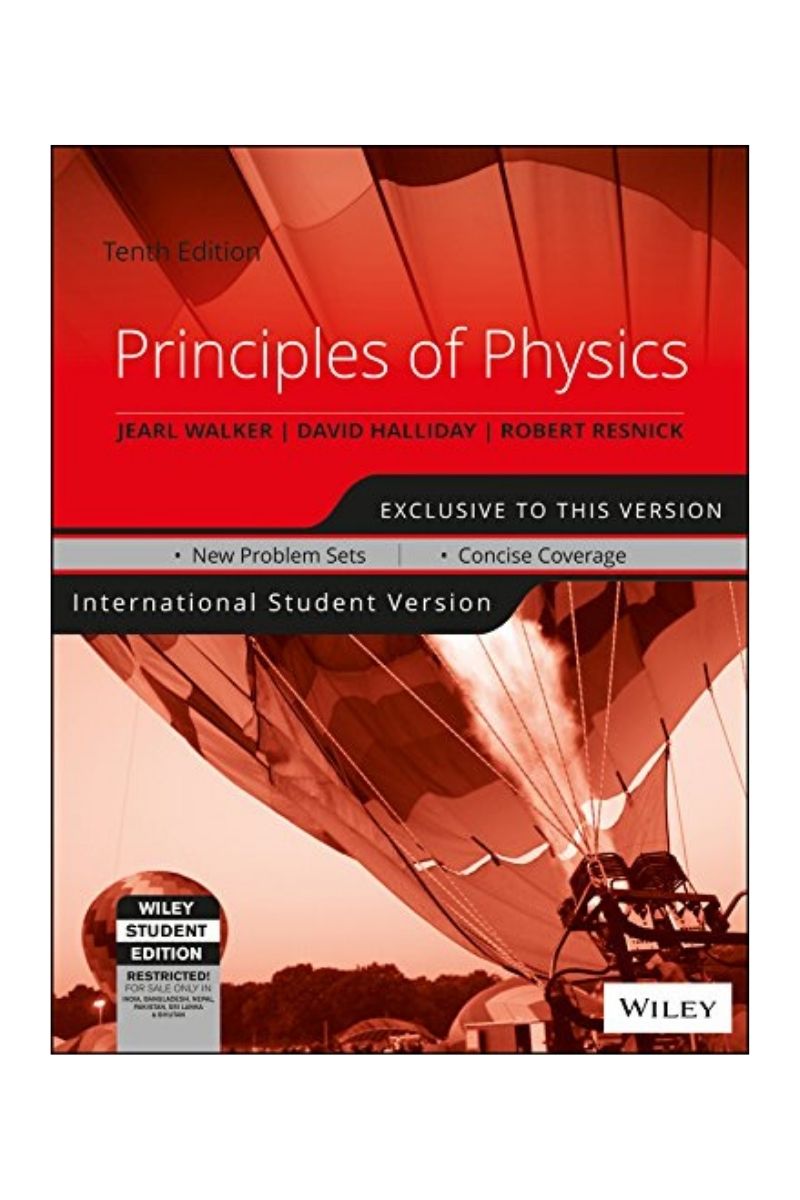
Principles of Physics by Resnick Halliday & Walker
Good book to build your understanding of physics concepts. Examples and checkpoints are very helpful. Every student who is comfortable with English as the language should read it. Exercise questions are good, though they are written for US audience (lot's of references to terms that Indian students might not be familiar with)
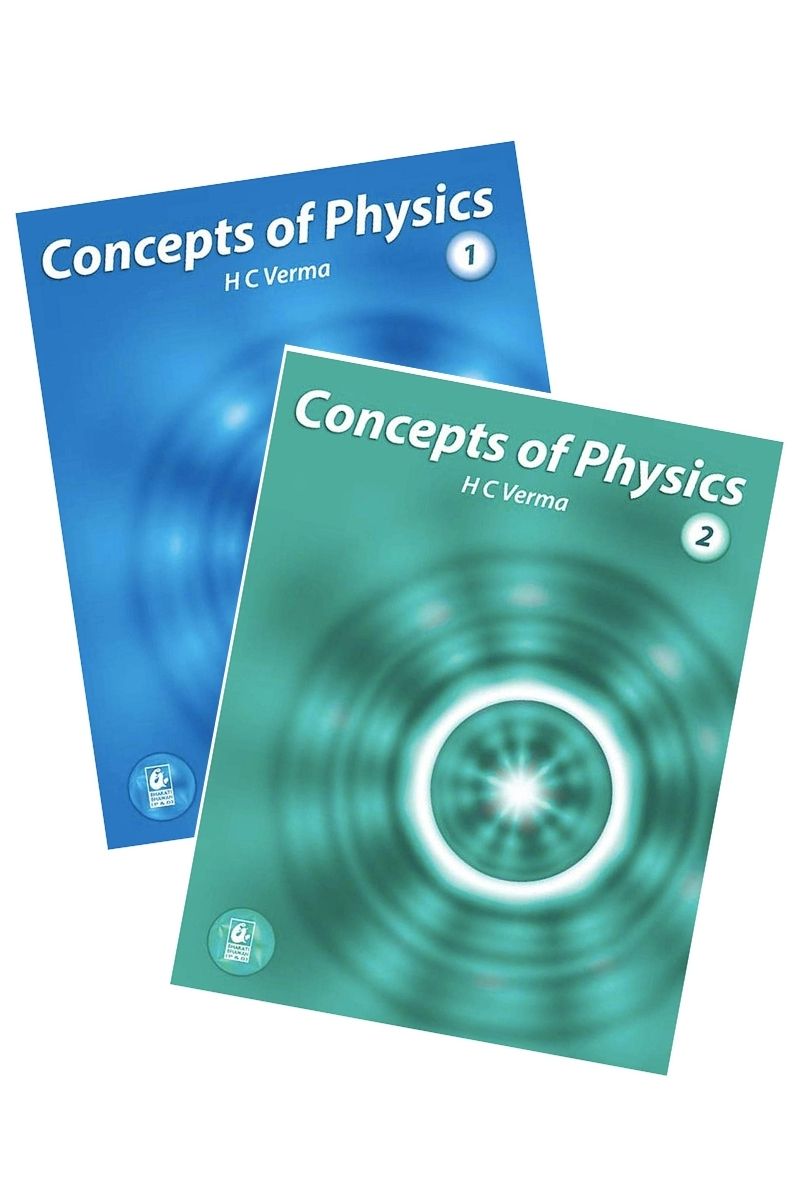
Concepts of Physics by HC Verma
Lots of solved examples, Objective I & Objective II multiple choice questions (good for JEE Mains) and exercise questions (good for JEE Advanced). An average of about 100 questions per chapter. Volume I is very relevant for JEE students. Volume II has many chapters, towards the end, that are not in JEE syllabus and can be ignored. Theory is concise and helpful
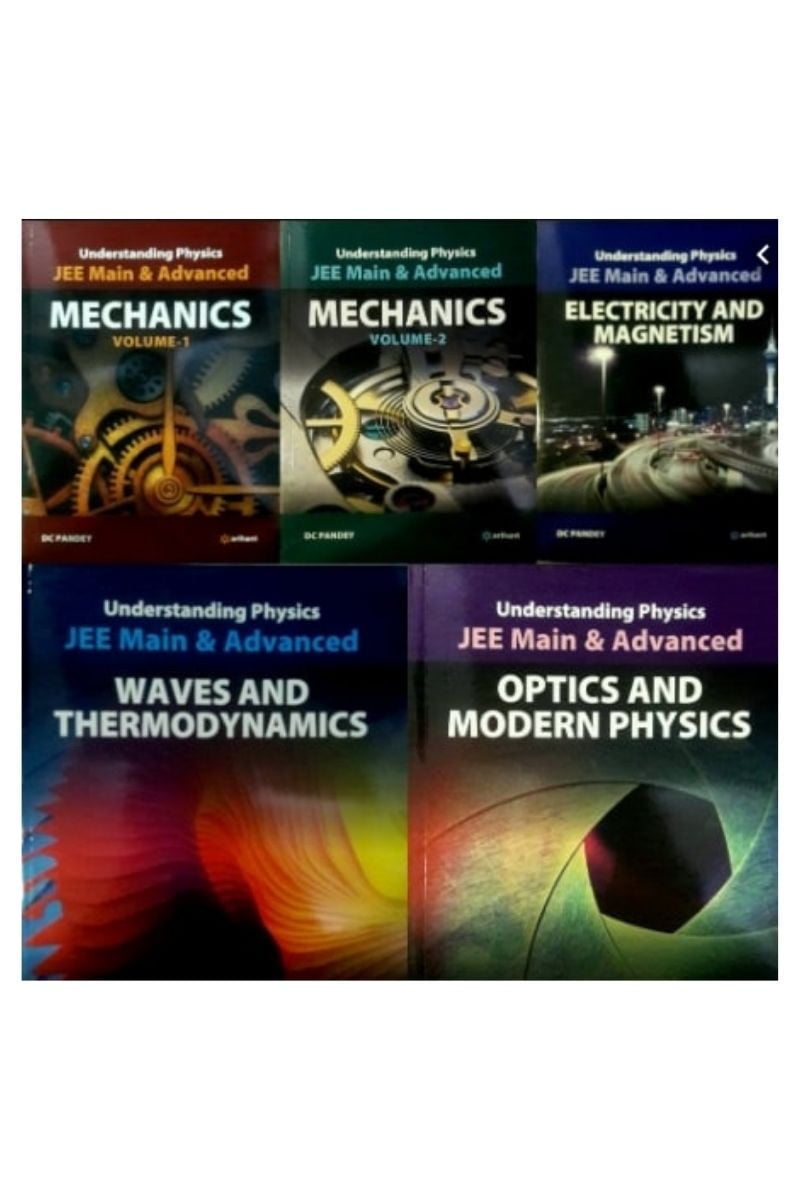
Understanding Physics by DC Pandey
Good compilation of questions of varying difficulty with an average of about 150 questions per chapter divided into Level 1 and Level 2. Only drawback is the volume of information (5 books with 600+ pages in each of these 5 books).

Cengage - Physics by B M Sharma
Good compilation of questions of varying difficulty level with an average of more than 200 questions in each chapter. Only drawback is the amount of information, which might make it slightly difficult cover all the important questions and revise the chapters

NCERT Textbooks (Class 11 & 12)
Since you will be using them for your 12th board exams, they will serve as a good read to further strengthen your understanding. Exercise questions, while limited in their scope of application of concepts, are good to go through at least once.
